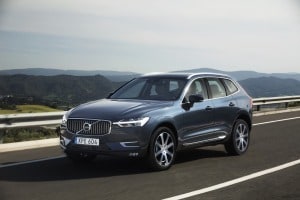Edmunds.com Raises 2012 Forecast to 14.4 Million New Vehicles

Auto sales during the first quarter outpaced beginning-of-the-year projections by 8.5 percent, thanks to a larger release of pent-up demand than originally expected. As a result, Edmunds.com has revised its 2012 forecast for new vehicle sales to 14.4 million from 13.6 million. Higher consumer confidence, as well as warmer winter weather and strong fleet sales, spurred sales strength in the first quarter, and Edmunds.com expects auto sales to remain at an elevated rate throughout most of the rest of the year, even as downside risks continue to loom. Political and fiscal uncertainty still could depress sales in the fall, with slowing economies in Europe and China still a threat to U.S. economic growth and to U.S. auto sales.

What happened in Q1?
Auto sales soared in the first three months of 2012 with seasonally adjusted annualized rates (SAARs) greater than 14 million. These SAARs are the highest since spring 2008, excluding the Cash-for-Clunkers program in August 2009. Pent-up demand from deferred auto sales during the recession has finally come back to the market in a substantial way and the three-month SAAR run suggests a new momentum emerging for auto sales.
Several factors have sparked the larger release of pent-up demand, including unusually warm winter weather and an increased interest in autos due to new products. Strong fleet sales in January contributed to higher-than-expected sales. The key motivating factor, though, came from the rapid rise in consumer confidence .
Consumer confidence and auto sales traditionally have been highly correlated, particularly during the recent recovery. In turn, confidence itself can be strongly affected by the stock market, which is commonly viewed as a barometer of economic conditions. The stock market recently returned to levels not seen since before U.S. debt downgrade and the rise likely reassured many consumers with concerns about an economic downturn. As a result, these newly confident car buyers, who previously had held back despite having the financial means and the access to credit needed to buy a new car, returned to market and boosted the release of pent-up demand.


Will auto sales momentum continue?
The outlook for auto sales looks promising for the rest of the year, too. The release of pent-up demand should persist as the aging of the national fleet of vehicles motivates consumers to replace these vehicles. Consumers should also continue to respond to replenished supply, popular new vehicles, and loosening credit conditions. Due to the strength of pent-up demand, auto sales could maintain momentum even if the economic recovery slows again.
Consumer confidence should remain high, and possibly increase further, through at least the second quarter and should continue to push car buyers back to market. Growing retail spending and manufacturing strength promise to continue to support the economic recovery, especially if fuel prices fall as expected, which should help keep the stock market near current levels and continue to bolster confidence.

What about the downside risks?
Potential downside risks to sales identified in our initial forecast still exist. Slowdowns in Europe and China could weaken demand for U.S. exports, which could in turn constrain U.S. growth and auto sales. Political uncertainty from the presidential election could slow auto sales. Uncertainty from upcoming expirations of the "Bush-era" tax rates and the payroll tax cut and other benefits at the end of the year also could dampen auto sales.
Fortunately, none of these risks has increased noticeably since our first forecast. Still, even without exceeding expectations, slower growth and political or economic uncertainty pose a threat to the strong consumer confidence that has been crucial to auto sales growth so far this year.
In addition, despite the recent pick-up in economic growth, certain key economic fundamentals — notably, income, employment, and housing wealth — have not changed yet substantially in ways that would support increased auto sales. So, after consumers who have the means to buy but previously lacked the confidence to do so have returned to the market, any further release of pent-up demand will be limited until these fundamentals improve for consumers who are constrained by their personal financial situations.
Why 14.4 million?
Edmunds.com's original outlook for the year underestimated sales in each month of the first quarter—by 3 percent in January, 15 percent in February, and 7 percent in March — meaning total sales could already be ahead by 250,000 to 300,000 for the year, assuming the rest of the year plays out as initially expected. But, additional sales beyond expectations are likely in the months to come. If sales continue to outpace projections at the average lift to date—8.5 percent, 2012 sales would total 14.7 million.
Given the factors that could limit sales in the second half of the year, though, Edmunds.com expects that sales will grow at a rate less than the average 8.5 percent lift to date. Even if demand were to reach 14.7 million vehicles, industry may not currently be able to keep pace (Ford already stated that it will not be able to meet expected demand this year, leading to a market share loss). As a result, Edmunds.com is raising its forecast for 2012 to 14.4 million.

Lacey Plache is the Chief Economist for Edmunds.com. Follow @AutoEconomist on Twitter.





